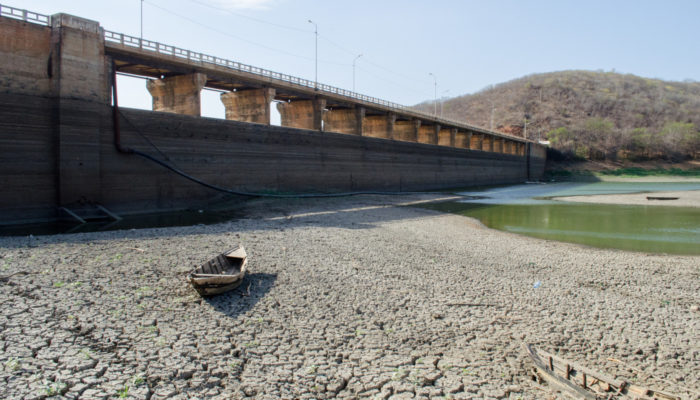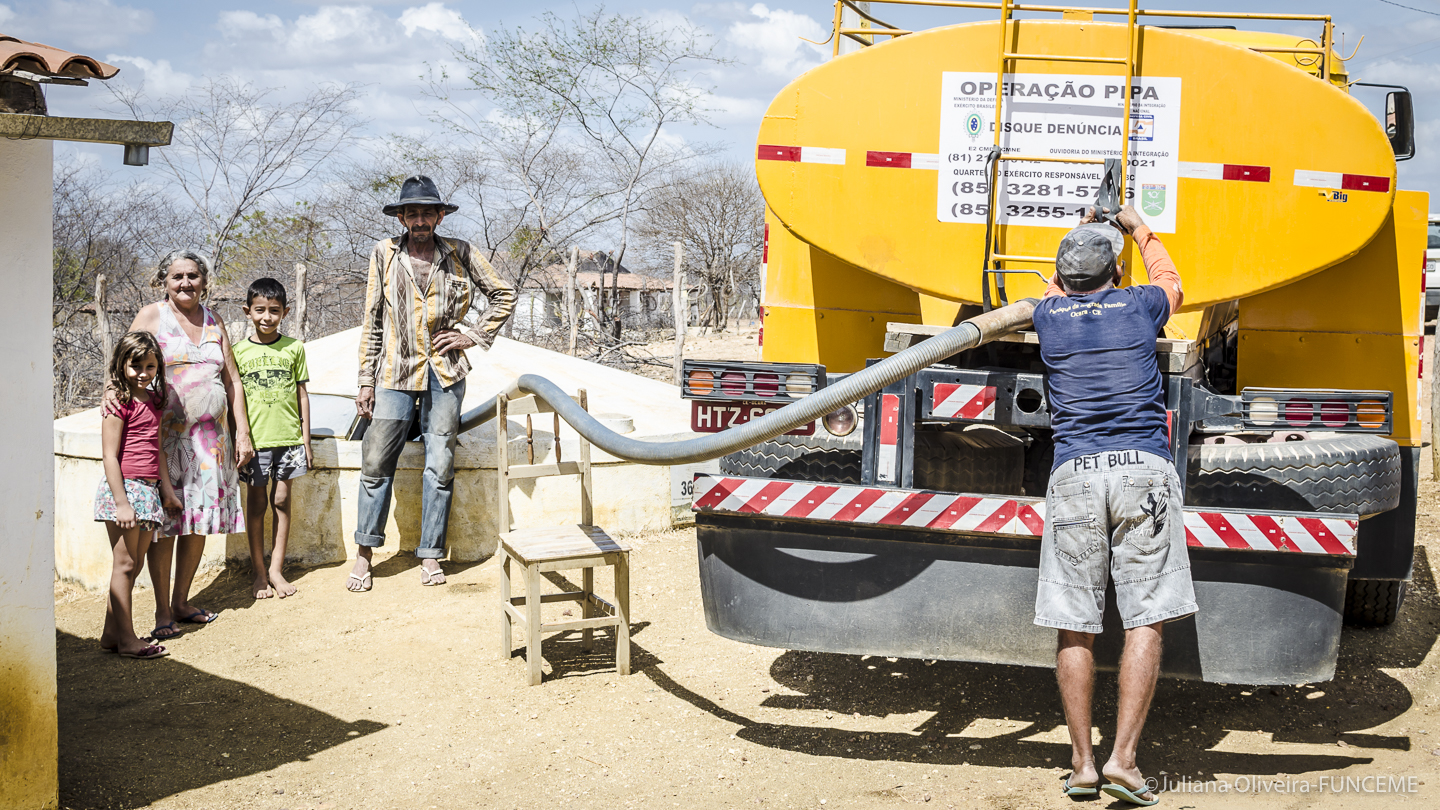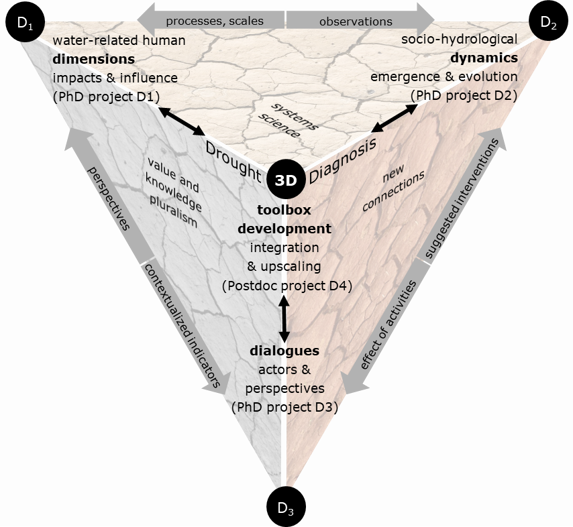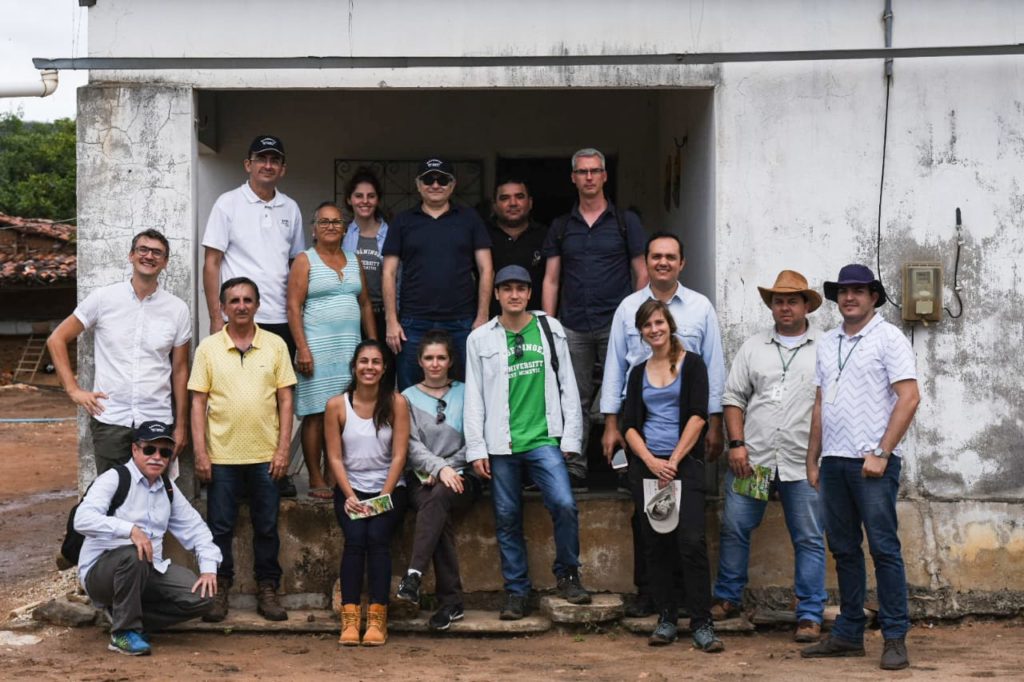
Worldwide, drought has put lives and livelihoods under serious threat. People are increasingly suffering from drought, but we often also aggravate drought ourselves. Fortunately, solutions to drought problems are mainly in our own hands as well. Drought is not just a water problem. It is a societal problem.
Droughts: a local problem with global relevance
In recent years, droughts seem to be almost constantly in the news. The locations, causes and impacts vary. From Cape Town approaching “Day Zero” in 2018 when the municipal water supply would be switched off due to almost empty reservoirs [1], to German forests on the verge of collapse due to annual summer heatwave-induced droughts [2]. From the current drought affecting 90% of California caused by a lack of winter snows that are relied on to recharge reservoirs and aquifers [3], to a decade-long drought in Somalia where failed rains have caused widespread crop losses and livestock deaths leading to famine and cholera outbreaks [4].

Brazil is less commonly associated with drought than many areas of the world. Indeed, Brazil possesses more renewable freshwater resources than any other country on Earth, around 20% of the planet’s supply [5], and a recent blog published on this website described how climate change is causing extreme rainfall events and landslides in São Paulo. But São Paulo, like Cape Town, has almost experienced its own day zero several times in recent years as reservoir systems have run dry, threatening the water supply to its 22 million citizens [6]. Yet, it is the northeast of Brazil where drought is the most impactful. The sertão is a semi-arid region comprising all or part of nine Brazilian states: Alagoas, Bahia, Pernambuco, Paraíba, Rio Grande do Norte, Ceará, Maranhão, Piauí, Sergipe, and Minas Gerais. This region makes up 12% (982,563 km2) of Brazil and, with a population of 22.6 million, is the world’s most densely populated dryland region. Rainfall is relatively high for a semi-arid region, averaging around 800 mm per year, though it is concentrated into just four months and interannual variability is high. However, high temperatures and low humidity cause annual evapotranspiration exceeding 2000 mm, while poor shallow soils above crystalline rocks create a lack of aquifers and only intermittent rivers [7].
Droughts in northeast Brazil occur at a frequency of several per decade. Among the worst were the droughts that occurred in 1777–1780 when 85% of livestock and half the population died due to famine, in 1877-1879 when up to 500,000 people died of famine and mass migration was triggered, and in 1958 when drought led to the migration of 10 million people [8]. The most recent drought lasted from 2012 to 2018 and was both the most prolonged and most severe in terms of rainfall deficit since rainfall monitoring began around 110 years ago [9]. Smallholder farmers, who comprise 28% of the population and are responsible for 95% of the agriculture, were hardest hit due to their reliance on rainfed agriculture for their livelihoods. Crop losses were estimated at 70-80% and economic losses at over US$3 billion [10]. As reservoir volumes collapsed, towns and cities suffered from a lack of domestic water supply and an increase in water-related disease due to poor water quality, in addition to food insecurity.
Because droughts in northeast Brazil are a recurrent event, why is the region not better prepared to cope with drought?
Government strategies to cope with drought in northeast Brazil fall into two categories: preparation and emergency response. Preparation has typically involved the construction of more and more reservoirs. However, holding back water upstream has exacerbated drought downstream, and the perceived increased water security that reservoir construction provides has led to further unsustainable water use, known as “the reservoir effect” [11]. Emergency response consists of: tanker trucks (carros pipas) to supply water to rural towns; provision of temporary jobs (frentes de trabalho) to combat unemployment, poverty and migration; crop insurance to cover harvest losses; and subsidised grain prices to prevent the decimation of livestock [7]. However, the United Nations’ Food and Agriculture Organization (FAO) often draws attention to the current ineffectiveness of drought management practices. The FAO notes that it is much more cost-effective and sustainable to focus on the underlying causes of drought than this more common reactive practice of crisis management [12].

Figure 2. A water tanker providing water to a rural family farm in Roldão, Ceará state, northeast Brazil. Photo credit: Juliana Lima Oliveira (FUNCEME), with permission.
Diagnosing drought to better deal with drought
The challenge we face is that traditional strategies to deal with drought are no longer sufficient. Building dams can even make things worse in the long run. So, besides water management, we must also change other things to increase drought preparedness. This change may concern agriculture, industry, domestic water use, and virtual water transfer through international trade in consumer goods. Most importantly, we can learn from past droughts by conducting integrated assessments of drought-affected areas. The context of local circumstances and individual situations matters for each region and every drought event. Thus, we need contextualised information to inform tailor-made emergency plans and long-term strategies for increased drought preparedness.
For example, considering the drought cases mentioned in the opening paragraph, traditional narrow drought assessment may miss key drivers of drought impacts, such as unequal exposure of populations to water scarcity. Proposed solutions to prevent another day zero in Cape Town predominantly involve augmenting water supply with basin transfers, desalination and groundwater exploration. However, a more holistic assessment shows the actual driver to be the great inequality in water use between wealthier and poorer neighbourhoods. The latter perpetually existing in states of water scarcity while the former enjoy swimming pools, green lawns and golf courses [13]. Drought preparedness, therefore, requires a political solution to redress this imbalance in water accessibility.
Regarding Somalia, while failed rains are blamed for drought impacts, the real driver is the humanitarian situation the population find themselves in. Somalia is exceptionally vulnerable to natural hazards due to the millions of internally displaced persons living in destitute temporary camps after fleeing from conflict or migrating from areas where previous droughts and overgrazing have caused desertification and loss of livelihoods [14]. Once again, drought preparedness requires a political solution to the ongoing conflict in addition to efforts to reverse environmental degradation.
We urgently need to systematically and holistically diagnose drought for better dealing with drought. We propose an approach analogous to a medical diagnosis, including: (1) An initial diagnostic assessment of the multiple water-related human Dimensions; (2) Diagnostic testing, or modelling and assessment of sociohydrological Dynamics; and (3) Consultation focusing on Dialogue with local and academic experts.

These three Ds – Dimensions, Dynamics and Dialogues – give our project its name: 3DDD. The project commenced in July 2019 as a collaboration between Wageningen University (The Netherlands) and three Brazilian partners: FUNCEME, Universidade Federal do Ceará (UFC) and Embrapa. The project is funded by the Netherlands Organisation for Scientific Research (NWO). To date, the Dimensions aspect of the research is exploring how drought monitoring globally focuses on drought drivers rather than impacts. The Dynamics aspect is revealing how human actions can modify and induce drought events in northeast Brazil. The Dialogues part of the research is demonstrating how policy changes in Brazil have influenced drought impacts and vice versa. Therefore, the 3Ds fit the standard three components of drought management plans: monitoring and early-warning (Dimensions), risk and impact assessment (Dynamics), and mitigation and response (Dialogues).

Figure 3. The 3DDD team at the project kick-off meeting in July 2019 when travel and field research was possible. Photo credit: Germano Ribeiro Neto, with permission.
Scientists, engineers, professionals, and other societal actors need to join forces to start dealing with drought effectively. Our project combines these forces in northeast Brazil. We aim to inspire others to systematically and holistically diagnose drought to consider all the drought drivers and impacts specific to their local context.
To learn more about the 3DDD project, see the website: https://3ddd-project.org/
Follow us on Twitter at: 3DDD Drought Diagnosis (@3DDD_drought) / Twitter
References
- Onishi, N. and S. Sengupta, Dangerously Low on Water, Cape Town Now Faces ‘Day Zero’, in The New York Times. 2018.
- Johnson, I.P., Germany’s forests on the verge of collapse, experts report, in DW. 2019.
- Alexander, K., Drought is real and California is now facing water restrictions, in San Francisco Chronicle. 2021.
- Prinsloo, K., Drought in Somalia: Time is Running Out, in Al Jazeera. 2017.
- World Bank. Brazil may be the Owner of 20% of the World’s Water Supply but it is still Very Thirsty. 2016 24 March 2021]; Available from: https://www.worldbank.org/en/news/feature/2016/07/27/how-brazil-managing-water-resources-new-report-scd.
- Kotze, P., 20 lessons from São Paulo’s Day Zero, in 50 liters. 2018.
- Magalhães, A.R., Life and drought in Brazil. Drought in Brazil: Proactive Management and Policy. Chapman and Hall/CRC, 2016: p. 1-19.
- Marengo, J.A., R.R. Torres, and L.M. Alves, Drought in Northeast Brazil—past, present, and future. Theoretical and Applied Climatology, 2017. 129(3): p. 1189-1200. https://doi.org/10.1007/s00704-016-1840-8
- Pontes Filho, J.D., et al., Copula-Based Multivariate Frequency Analysis of the 2012–2018 Drought in Northeast Brazil. Water, 2020. 12(3): p. 834. https://doi.org/10.3390/w12030834
- Brito, S.S.B., et al., Frequency, duration and severity of drought in the Semiarid Northeast Brazil region. International Journal of Climatology, 2018. 38(2): p. 517-529. https://doi.org/10.1002/joc.5225
- van Oel, P.R., et al., Diagnosing drought using the downstreamness concept: the effect of reservoir networks on drought evolution. Hydrological Sciences Journal, 2018. 63(7): p. 979-990. https://doi.org/10.1080/02626667.2018.1470632
- FAO, Proactive Approaches to Drought Preparedness—Where Are We Now and where Do We Go from Here? 2019, Food and Agriculture Organization of the United Nations, Rome, Italy.
- Savelli, E., et al., Don’t blame the rain: Social power and the 2015-2017 drought in Cape Town. Journal of Hydrology, 2021: p. 125953. https://doi.org/10.1016/j.jhydrol.2020.125953
- reliefweb. Somalia: Drought – 2015-2021. United Nations Office for the Coordination of Humanitarian Affairs (UN, OCHA). 2021 25 March 2021]; Available from: https://reliefweb.int/disaster/dr-2015-000134-som.
Post edited by: Asimina Voskaki, Valeria Cigala
